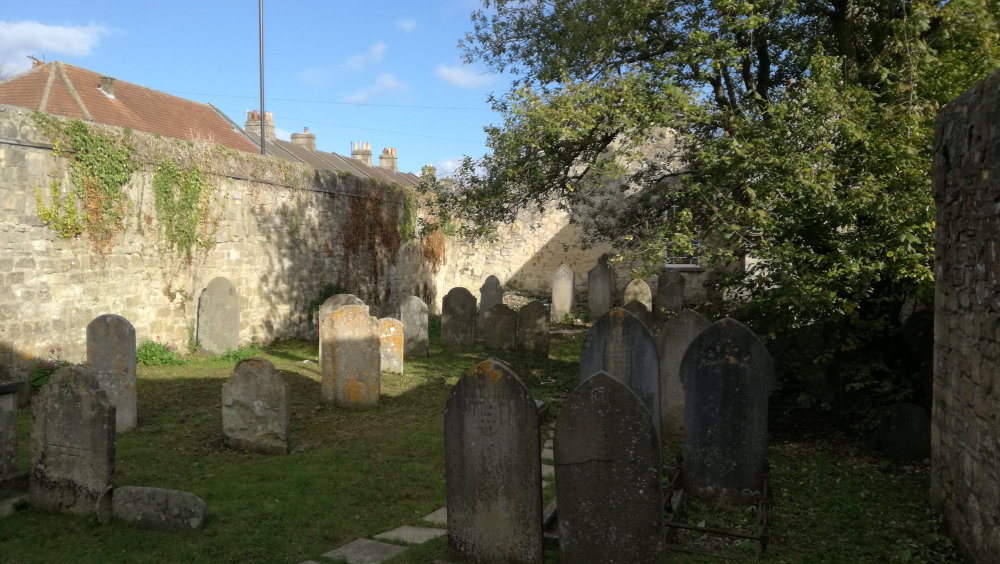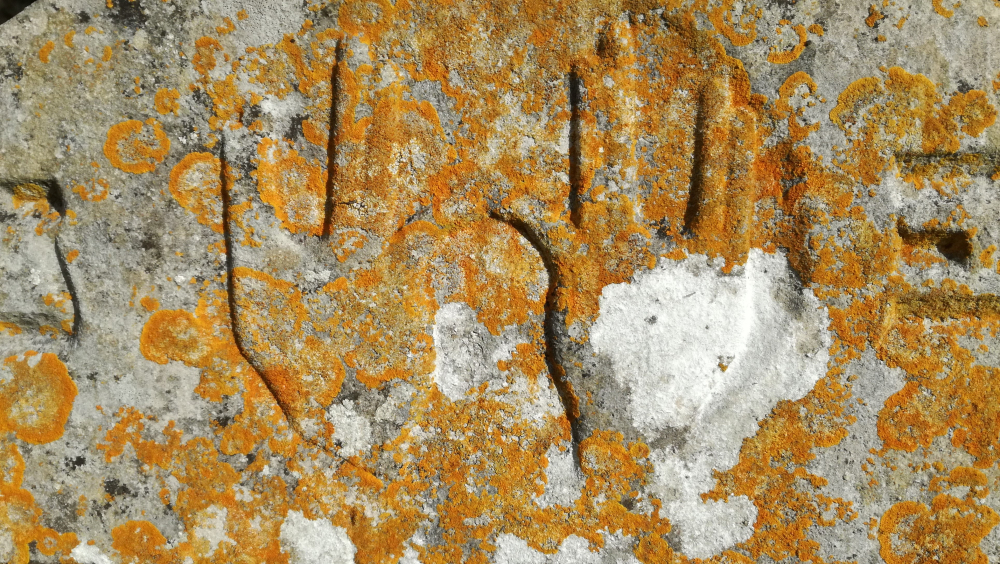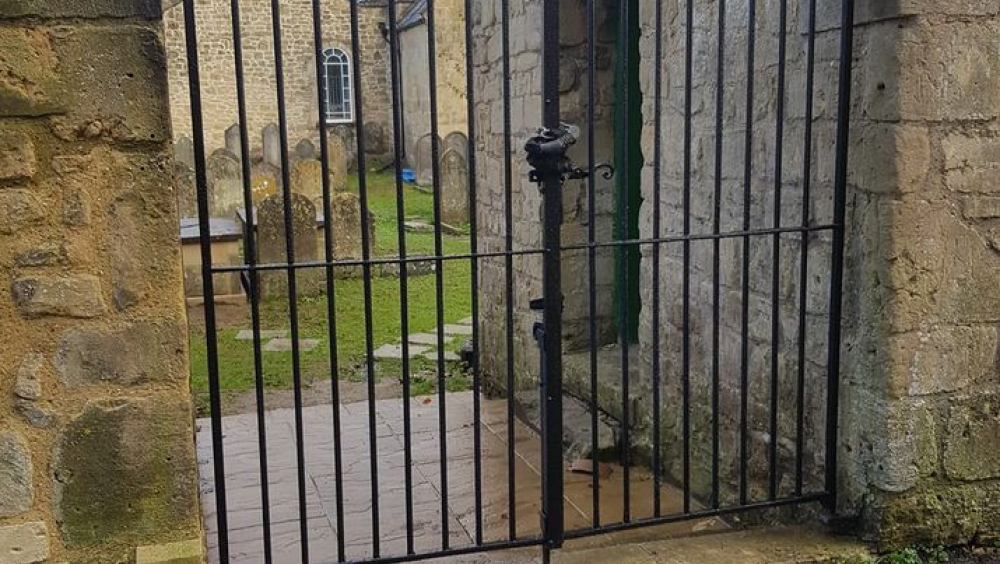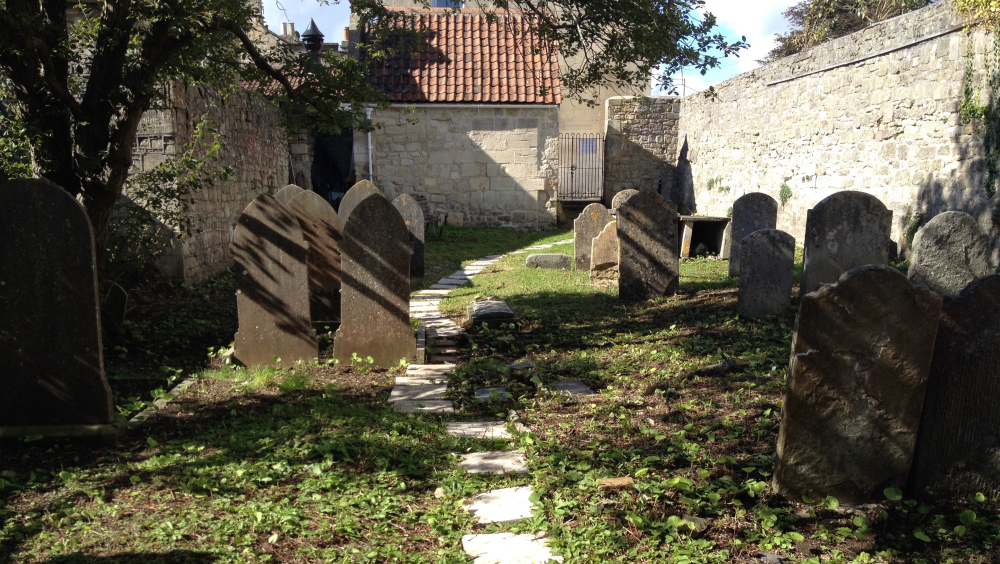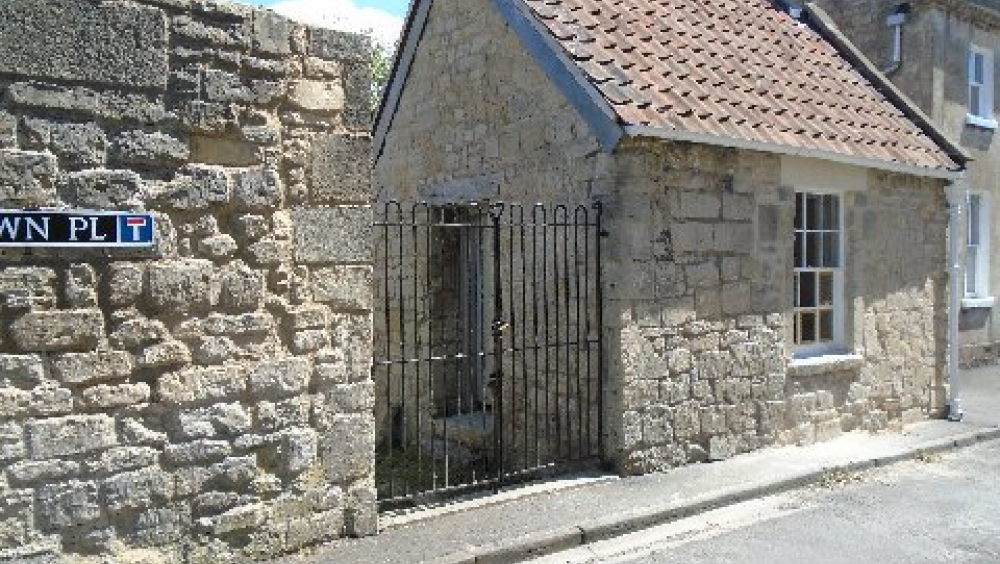Through the Gate: Bath Jewish Burial Ground
The old Jewish Burial Ground on the edge of Bath is a quiet green place, so near to the traffic on the main road and yet it feels like somewhere belonging to another century.
Between the burial of Sarah Moses in 1812 and Solomon Kesseff in 1921 lies a ‘hidden’ story, a community bound together by their faith, and active in Bath’s business and social life. The Friends of Bath Jewish Burial Ground CIO maintains and conserves the Burial Ground, researches the people buried there and the wider community in which they lived and worked, and – most importantly – shares the story.
The most striking aspect of the Bath Jewish Burial Ground story is that the people buried here represent so many countries in Europe: our research finds migration from Germany, Poland, Austria, Lithuania, Latvia, Russia, France, and more. This little cemetery is a microcosm of Jewish migration and a physical sign of the shifting politics, frontiers, and nation-states that marked the 18th and 19th centuries in Europe. It is awe-inspiring to imagine each person’s journey to disembark from a ship somewhere on the English coast, and then to think about how and why they ended up in Bath. Bath was of course a significant ‘tourist’ city in the late 18th and early 19th centuries, as it is today. Many of the people we have researched set up as jewellers, silversmiths or watchmakers; tailors and clothing retailers; and dentists and doctors – Bath’s constant stream of well-off visitors coming to take the healing waters and bathe in the hot baths were an ideal customer-base.
There are more people buried under this peaceful green ground than it appears today. Many headstones have broken off; there are gaps with apparently no burials, and places where the stones are very close – this suggests that the burial ground is in fact full. Others have fallen and been gradually covered with grass and soil: in 2023 we discovered an intact fallen headstone under about 10cm of soil. Many inscriptions are badly deteriorated or have completely de-laminated (flaked off) and are lost forever, but where we can discern names and dates we are able to follow the clues to identification. Some inscriptions are only in Hebrew, some in both Hebrew and English; sometimes a low angle of sunlight on a clear spring or autumn day will suddenly render an inscription legible for the first time, and it is very moving to read a long-hidden, long-dead name for the first time in living memory.
The story of the burial ground starts in 1812 when four men from the Bath Jewish community signed a lease with the freehold owner Henry Street, builder and quarry master in Combe Down. This was where open-cast stone quarrying was undertaken, extracting the stone used to build the Royal Crescent, the Circus and other new developments in the city. The four men signing the lease were Michael Lewis, clothes dealer; Henry Moore, jeweller; Jacob Abraham, optician; and Hyam Israel, broker, and they agreed a peppercorn rent (which at the time meant, literally, a peppercorn to be offered to Mr Street once a year, should he demand it). Abraham was a successful optician in Bath and advertised regularly; we have not found definitive research records for the other three. The magnificent lease, handwritten on a huge piece of parchment, is in the Bath Record Office, complete with its signatures and red wax seals.
The burial ground in 1812 was less than half the size of the current plot; the rear (eastern) section was acquired later in the 19th century, as the first plot filled up, and later a small rectangular plot on the south side was acquired. We are often asked why it is in Combe Down? The Jewish faith requires a burial ground to be on the edge of an urban area and away from the community’s Synagogue or shul. It is likely therefore that Jacob Abraham and the others looked for available land on the edge of Bath, and it was probably a chance business connection that led them to hear of Henry Street owning a plot he was willing to lease.
There is a single-room stone cottage with a tiled roof in the south-west corner. In the past it was believed that this building had a religious purpose, but we now know that it did not, and that it was always a dwelling-house. It pre-dates 1812, and our research indicates that it originally had two rooms. At various times, the occupants acted as informal caretakers, perhaps holding a key to the gate. Census returns show that quite large families lived here in the mid-19th century, the men working as stone miners and the women as laundresses.
And where was the Synagogue in Bath? A building in Kingsmead Street was used as a Synagogue from about 1821; before this, services would have been held in people’s homes. It was not until 1842 that a new synagogue was built in Corn Street, near the river: we know that the Synagogue suffered several floods. We have been able to study the Bath community’s cash ledgers for the 1890s, and the minute books recording their meetings in the 1880s and 1890s. These provide a wealth of information about the administration of the Synagogue and the community’s affairs, and the costs of repairs to the cottage at the burial ground and maintenance of the Synagogue.
The Synagogue was in use until 1902, by which time the community had dwindled to such a small number that it was no longer viable. But occasional burials continued until at least 1921, and the small community met for services in people’s homes. Kerstein’s Hotel, a kosher establishment in Duke Street owned by Nathan Kerstein, held services until the late 1940s. Interestingly, there was more than one kosher hotel or boarding house in Bath in the period between the first and second world wars, and the city advertised in Jewish newspapers as a holiday destination where visitors would be welcome and their dietary and religious needs accommodated.
Almost 50 burials have now been identified, most from visible headstones but also from evidence of death and burial records and newspaper reports. We are still discovering new information and leads. Our research has broadened from those buried here to look at the growth and development of the Jewish community in Bath from the late 18th century up to 1945, and we will be publishing a book. Many of them seem to have been successful shop owners or independent tradespeople, but we also see the fragility of the local economy, with people switching jobs frequently, or becoming bankrupt and then coming up again in a different line of business – and not just the men, there were successful women also running shops and small businesses. But others were only scratching living in low-paid irregular work or as itinerant ‘pedlars’ or travelling salesmen, or the women as seamstresses or laundresses.
Bath Jewish Burial Ground is always open to the public during Heritage Open Days each September, and on three or four additional days in the year. We are always delighted to show people round privately at any time by appointment – please contact us via the website or Facebook.
Our research over the last few years paints a vivid picture of the Bath Jewish community in the late 18th, 19th, and early 20th centuries. We see a lively, active, cosmopolitan community, speaking many European languages as their mother-tongue, sometimes passionately arguing with each other, and engaged in a wide variety of businesses and trades.
The community came to Bath from many European countries. Using Census information to research individuals, it is evident how the town or city of birth 'moved' between different countries at different dates, as territories and frontiers of Prussia, Russia, Germany and Poland changed.
We are proud to add this once-hidden community to the story of Bath.
